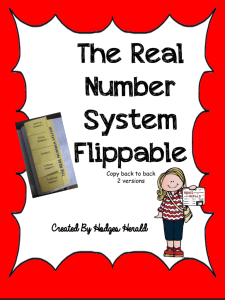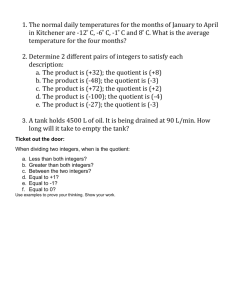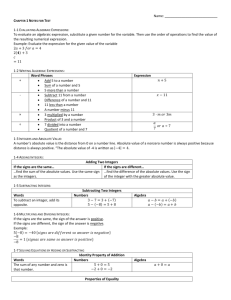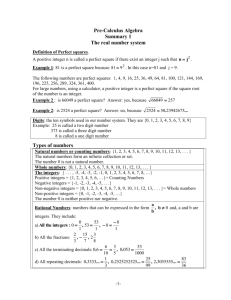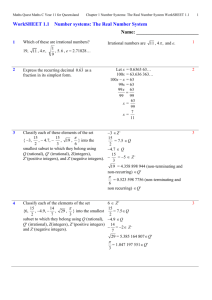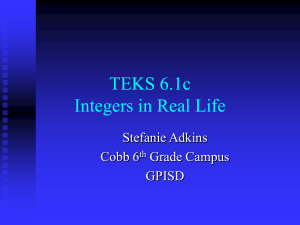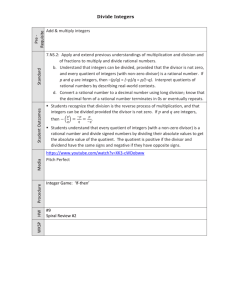x - Mrs. Andrews` CBA classes
advertisement
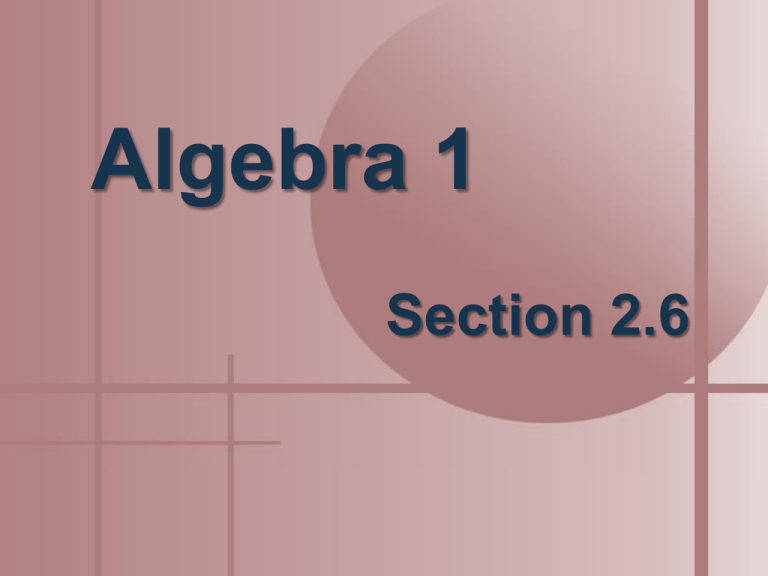
Algebra 1 Section 2.6 Simplifying Equations You can use the distributive property to: Remove parentheses Combine like terms Example 1 Solve 3x + 2 + 5x – 7 = 28. 8x – 5 = 28 8x – 5 + 5 = 28 + 5 8x = 33 Example 1 8x = 33 8x 33 = 8 8 33 x= 8 Did you check your answer? Example 2 Solve 3(x + 1) – (x – 2) = 13. 3x + 3 – x + 2 = 13 2x + 5 = 13 2x = 8 x=4 Example 3 Let x = John’s age Let 4x = John’s mother’s age Let 2x = John’s brother’s age 4x + 2x + x + 3 = 80 7x + 3 = 80 x = 11 Example 3 x = 11 x = John’s age John is 11 years old 4x = John’s mother’s age John’s mother is 44 years old 2x = John’s brother’s age John’s brother is 22 years old Converting a Repeating Decimal to a Fraction of Two Integers 1. Write an equation in which x is equal to the repeating decimal. 2. Use the Multiplication Property of Equality to multiply both sides of this equation by 10n, where n is the number of repeating digits. Converting a Repeating Decimal to a Fraction of Two Integers 3. Subtract the original equation from the new equation formed by the multiplication. This step is an application of the Addition Property of Equality since we are subtracting equal quantities from each side of the equation. Converting a Repeating Decimal to a Fraction of Two Integers 4. Solve the resulting equation and reduce the fraction to lowest terms. Example 4 Express 0.36 as a quotient of integers. x = 0.36 100x = 36.36 – 99x = 36 Example 4 Express 0.36 as a quotient of integers. 99x = 36 99x 36 = 99 99 36 4 x= 99 11 Example 5 Express 1.36 as a quotient of integers. x = 1.36 10x = 13.66 – 9x = 12.3 Example 5 Express 1.36 as a quotient of integers. 9x = 12.3 9x 12.3 = 9 9 12.3 123 41 x= 30 90 9 Homework: pp. 77-78

